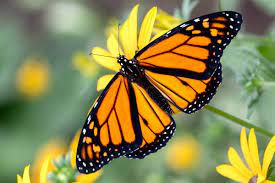Eastern Monarchs or extinct monarchs?

Vermont’s state butterfly, the eastern monarch, is facing endangerment.
According to the Center for Biological Diversity, a nonprofit dedicated to protecting wildlife, the population of eastern monarchs has declined by roughly 85% since the 1990s.
But what’s happening to these once plentiful orange beauties?
Eastern monarchs migrate thousands of miles from the east coast to the south and Mexico in the wintertime. They stop along the way several times to cluster in colonies to keep warmth and lay their eggs on milkweed plants — the only plant monarch caterpillars eat.
However, climate change, illegal logging and pesticides have been killing milkweed, flower beds and monarch habitats at a rapid rate. Monarchs, along with other species, are therefore not able to reproduce like they once did.
Monarchs are currently on the candidate waiting list for Endangered Species Act protection, according to the U.S. Fish and Wildlife Service. If populations do not grow by 2024, they will be proposed for protection as threatened.
Scott Hoffman Black, the Executive Director of the Xerces Society, a nonprofit that focuses on Invertebrate Conservation, spoke with PBS news this past July and discussed the remedy for helping this endangered species. He stated everyone needs to take a stand and it can start in your own backyard. Ensure there is milkweed in the landscape and a “buffet of flowers.”
Monarchs migrate long distances, so along the way, they need this fuel to continue traveling and reproducing. To get more involved, visit www.saveourmonarchs.org, a nonprofit organization dedicated to saving monarch butterflies. Whether you’re purchasing packets of seeds to plant or just donating to the organization, every bit helps save our state butterfly.








